Installing OS from a Windows 11 bootable USB installer is one of the most convenient methods to switch to a new OS or update the existing one. Windows 11 bootable USB helps to clean install Windows 11 and install the same OS on multiple PCs. You can also use it to update an existing Windows OS to Windows 11 and troubleshoot any system issues.
However, primarily, you must ensure that your PC meets the system requirements of Windows 11. If you want to install the OS using a bootable USB, you must first download the Windows 11 ISO file and create Windows 11 bootable USB installer. We’ll discuss how to download the Windows 11 ISO file and then walk you through the 3 methods to create a bootable USB. Let’s begin.
How to download the Windows 11 ISO file?
To create a bootable USB installer, you need to download the Windows 11 ISO file or ISO image. It is a simple procedure, and you just need to follow the steps below.
Step 1:Go to the officialMicrosoft Windows 11 download pageand scroll down to locate theDownload Windows 11 Disk Image (ISO)section.
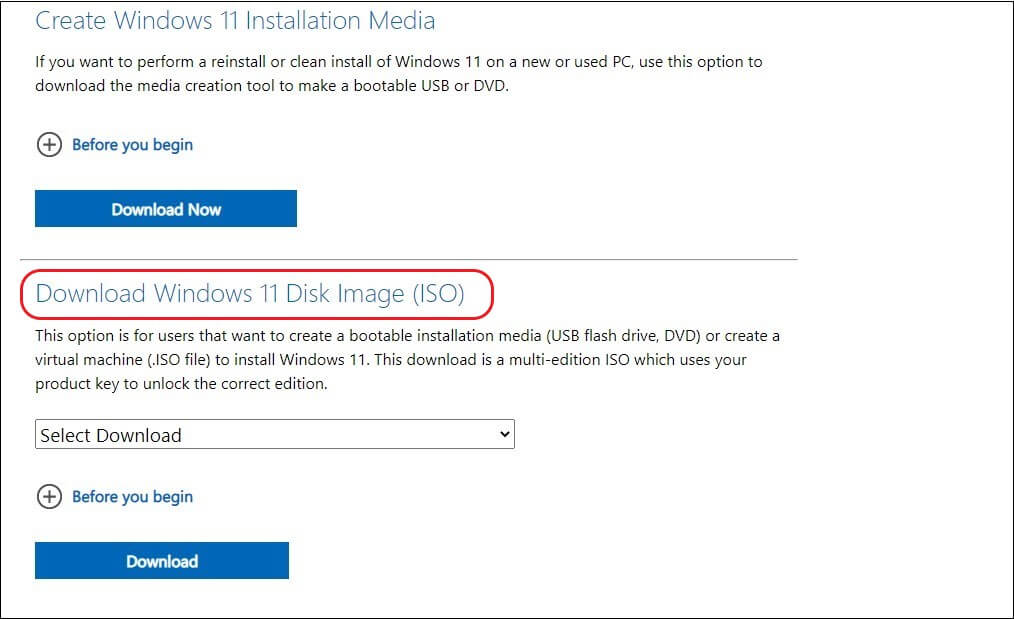
Step 2:Click theSelect Downloadtab and selectWindows 11 (multi-edition ISO)from the drop-down menu.
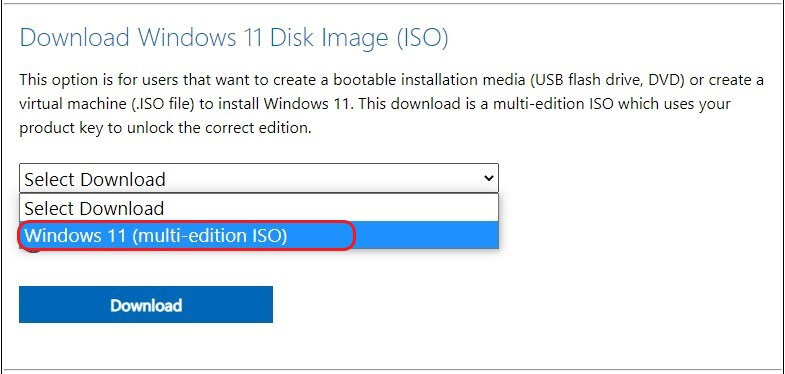
Step 3:ClickDownloadto continue. A new section loads under theDownloadbutton to select the product language.
Step 4:Choose your preferred language from the drop-down menu and clickConfirm.

Step 5:Click the64-bit Downloadbutton to initiate the Windows 11 ISO file download immediately.
Be patient, as the Windows 11 ISO file download might take some time, depending on your internet speed.

| Note: Before you proceed to the DIY methods to create bootable USB, you must retrieve your data usingprofessional data recovery softwarewith a bootable recovery option. If you don't recover your data beforehand, you might lose it permanently. |
How to create Windows 11 bootable USB?
There are 3 ways to create Windows 11 bootable USB. All 3 methods are equally effective, and you can try any based on your preference. You can create the bootable USB installer through the Media Creation Tool, Command Prompt, or Rufus. Let’s discuss each of these methods in detail.
Method 1: Create a bootable USB with Windows 11 Media Creation Tool
媒体创建工具是微软工具开发ed to help you create a Windows bootable USB installer. The tool is specifically designed to facilitate the creation of a bootable installer.
Using this tool, you can download the Windows ISO files onto a USB or burn them on a DVD/CD. It is one of the best utilities if you want to conduct a Windows 11 clean install or keep a copy of the OS handy in case you encounter any issue with the installed OS.
Connect a USB drive of a minimum 8 GB (recommended 16 GB) capacity and follow the instructions to create a bootable USB using the Windows 11 Media Creation Tool.
Step 1:打开Microsoft Software Downloadpage and clickDownload Nowbutton beneath theCreate Windows 11 Installation Mediasection.

Step 2:打开MediaCreationToolW11.exeand clickAccept.

Step 3:Choose your preferred language, select Windows 11 in theEditiontab and clickNext.

Step 4:In theChoose which media to usewindow, selectUSB flash driveand clickNext.

Step 5:Select the USB from the list and clickNext > Finish.
| Note:Make sure nothing important is stored on the USB, as all the data on the USB will be erased during the process. |
Once the Windows 11 Media Creation Tool completes the process, your bootable USB is ready to use.
Method 2: Create Windows 11 bootable USB using Command Prompt
Command Prompt is a native Windows 11 command-line tool. You can easily create a Windows 11 bootable USB if you know the right commands. You can use the diskpart command to create the USB installer. Here’s how to do it.
Step 1: Typecmd在搜索栏和开放Command Promptby clickingRun as administrator.
Step 2:输入命令diskpartand hitEnter.

Step 3:To list the USB drive, type the commandlist diskand pressEnter.
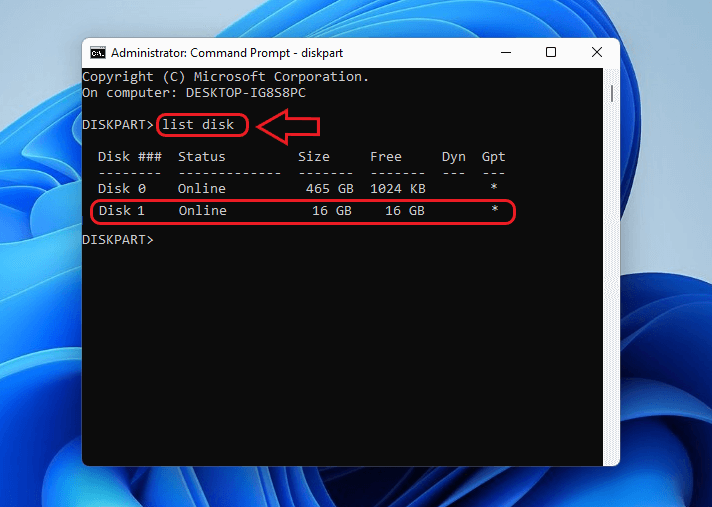
Step 4:Select the USB drive by typing the commandselect disk 1(replace digit 1 with the USB's number in the list)—pressEnter.
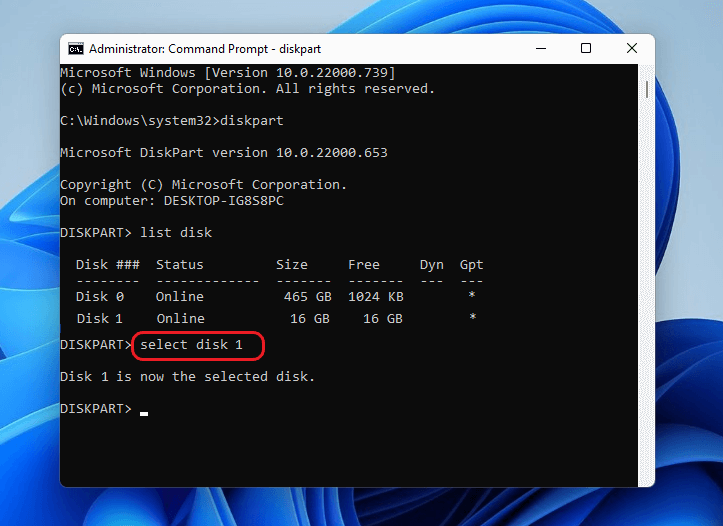
Step 5:You need to format the USB drive. Insert the commandcleanand pressEnter.

Step 6:Insert the following commands one by one and pressEnterafter each.
create partition primary
list par
active
select partition 1
format FS=NTFS label=”bootableUSB” quick override
assign letter=X
exit

| Note:You can replace the letter X in the above command with a letter of your choice. |
Step 7:Type the following command to mount theISO fileand pressEnter.
PowerShell Mount-DiskImage -ImagePath "C:\path\to\Windows11.iso"
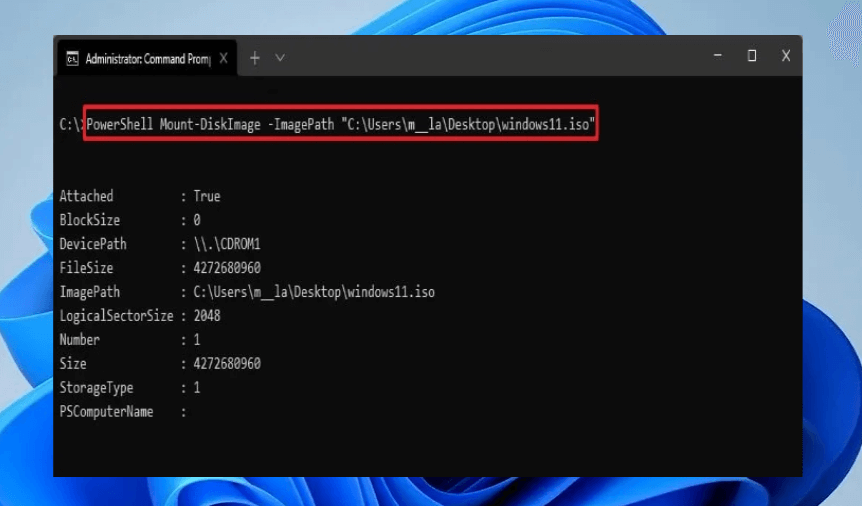
| Note:Replace the path within the inverted commas (C:\path\to\Windows11.iso) with the path of the ISO file on your PC. |
Step 8:Type the following commands and pressEnterafter each.
Diskpart
List volume
Exit
Step 9:Again, insert the following commands one by one and pressEnterafter each.
E:
cd boot
bootsect /nt60 X:
xcopy E:\*.* X:\ /E /F /H
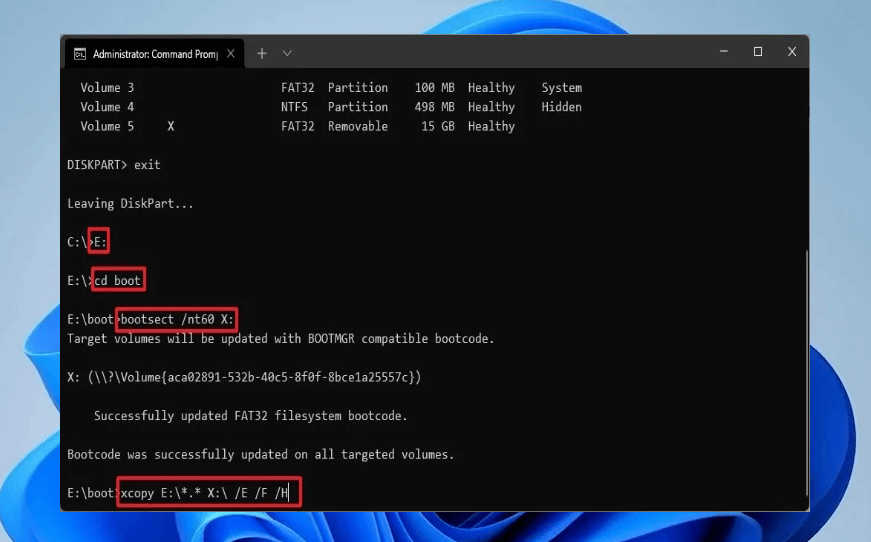
| Note:In the above commands, replace the letters X and E with the suitable letters for the ISO file and USB, respectively. |
Once the process is complete, your Windows 11 bootable USB is ready to be used.
Method 3: Create Windows 11 bootable USB with Rufus
Rufus is an open-source utility that helps to format and create bootable USB devices for Windows. It is fast in operation and needs no installation. You can download the executable file and start using it directly. It comes in as a handy tool to create a USB installer using the Windows ISO file. Follow the steps below to create Windows 11 bootable USB using Rufus.
Step 1:打开Rufus official siteand download the utility under theDownloadsection.
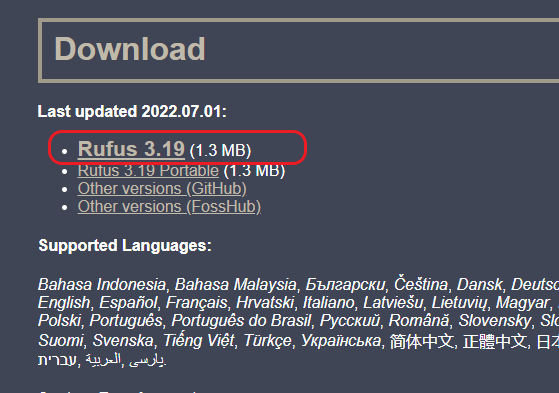
Step 2:Go toDownloadson your PC and double-click theexecutable fileto launch Rufus.
Step 3:Click theApplication Settingsbutton at the bottom (third from left).
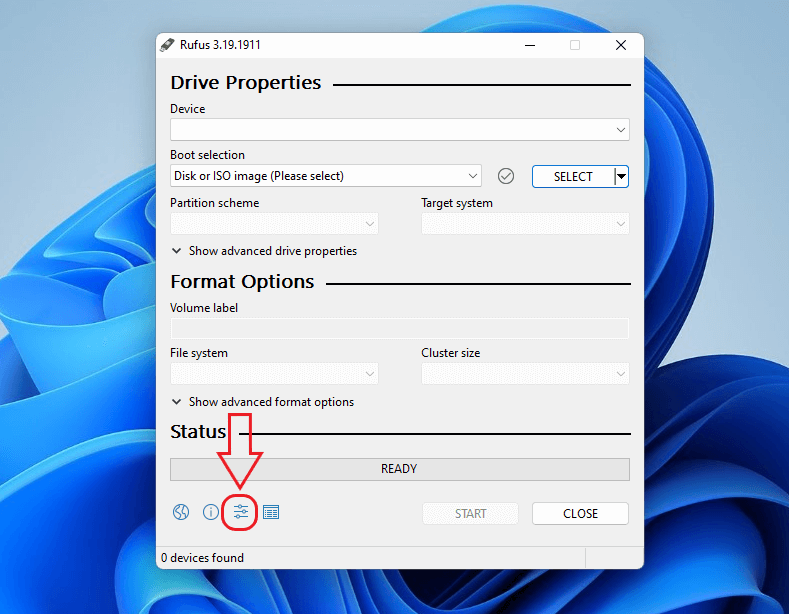
Step 4:Set theCheck for updatessection atDaily (Default)and clickClose.

Step 5:Close the main windows and relaunch Rufus.
Step 6:Select your USB from the drop-down list under theDevicesection, select the downloaded ISO file from the drop-down menu under theBoot selectionsection, and clickSelect.
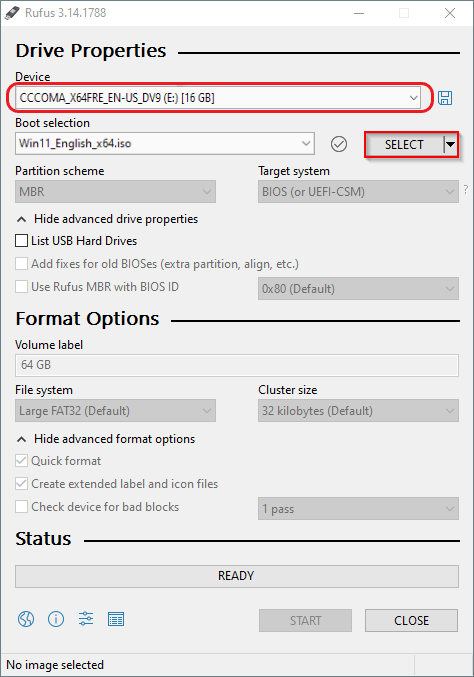
Step 7:In the new window, navigate to the location of the Windows 11 ISO file. Select it and clickOpen.
Step 8:SelectStandard Windows 11 Installation (TPM 2.0 + Secure Boot)option from the drop-down menu under the Image Options tab.
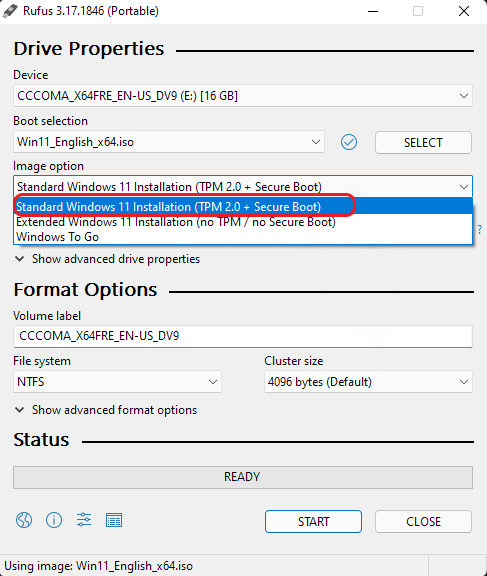
Step 9:Set thePartition scheme (GPT)andTarget system (UEFI)as default and enter a name for your USB drive under theVolume labeltab.
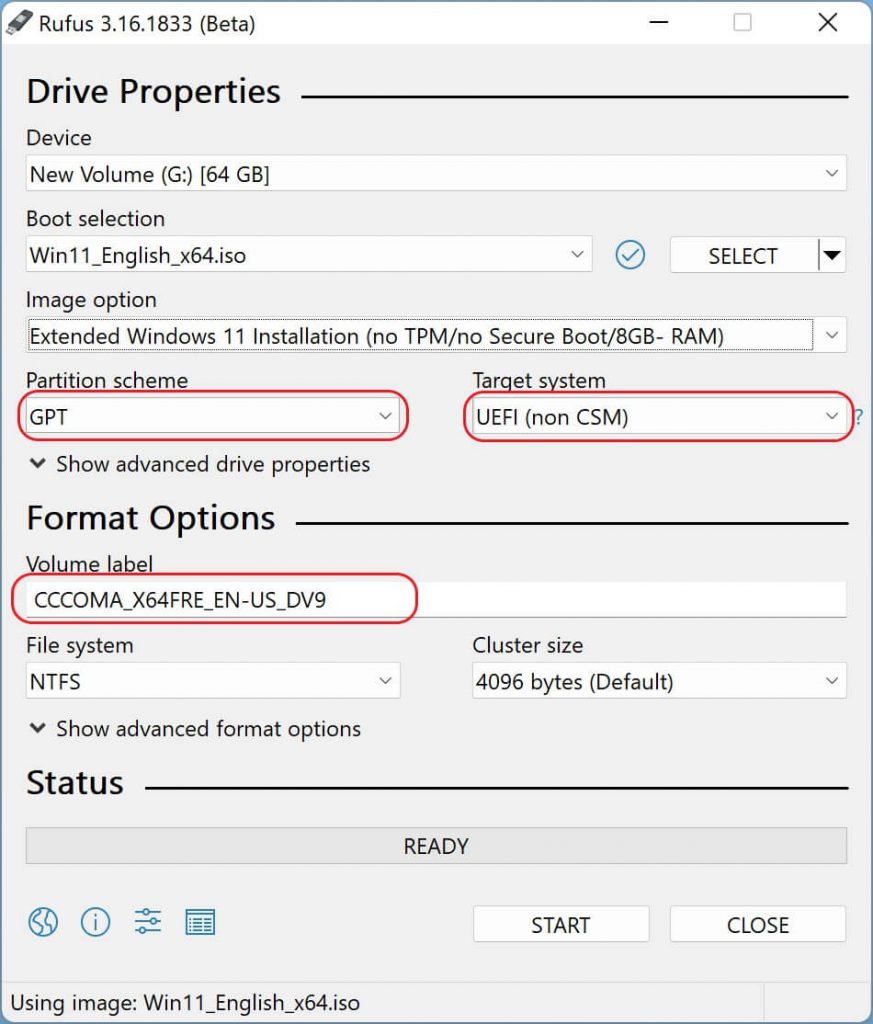
Step 10:Set all other options as default. Check the boxes againstQuick formatandCreate extended label and icon filesoptions.
Step 11:Click theStartbutton at the bottom-right to initiate the process to create Windows 11 bootable USB.
Bonus Tip: Recover data in case of data loss
As the above procedures include erasure of data on the USB drive, you might needprofessional data recovery softwarefor Windows to get back your data. Moreover, you’ll probably proceed to clean install Windows 11 using the bootable USB. So there are chances of losing the already saved data on your PC.
Stellar Data Recovery Professional for Windows might come in handy in such a situation. It’s a 100% secure and trusted data recovery solution that works even in the worst data loss situations. Here’s how you canrecover data using Stellar Data Recovery Professionalin three simple steps.

Conclusion
Even if you don’t need a bootable USB for a clean install of Windows 11, it always comes to your rescue when you encounter any system issues related to your OS. You can use the Windows 11 bootable media to troubleshoot in case your OS crashes or becomes non-bootable. Moreover, it’s always good to help a friend or two by providing him with portable Windows 11 installer USB. Don’t hesitate to share which method worked for you, and if you've any other methods, we'd love to know about them.
FAQ
1.Can I download Windows 11 manually?
Yes, you can easily download Windows 11 like any update on your Windows PC. Simply, go to theSettings > Update & Security > Windows Updatesand clickCheck for updates.If your PC is eligible for an upgrade, you’ll find the Windows 11 feature upgrade listed as an available update.
2. Does Rufus support Windows 11?
The latest version of Rufus is Windows 11 compatible, and you can use it to create Windows 11 bootable USB, as explained in the above article.
3. Can Windows 11 run from USB?
You can run Windows 11 and Windows 10 from a bootable USB. In addition, if you are using an older OS version, you can use a bootable USB drive to run Windows 11/10 operating systems on your PC.
4. How can I create Mac bootable USB?
You can easily create a bootable USB for Mac device. The bootable USB installer for Mac is very useful in addressing multiple issues related to macOS. You can learn the method from our articleHow do I Create a Bootable USB for Mac.

 Free Download
Free Download














